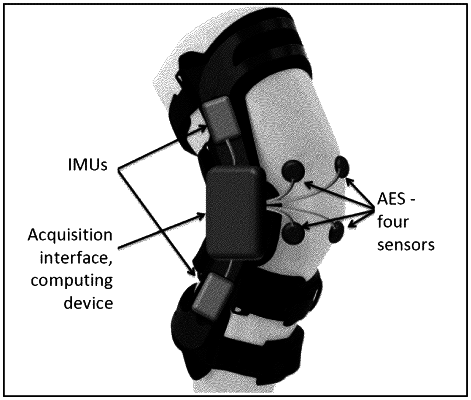| CPC A61B 5/4851 (2013.01) [A61B 5/1121 (2013.01); A61B 5/1122 (2013.01); A61B 5/4528 (2013.01); A61B 5/6812 (2013.01); A61B 5/7282 (2013.01); A61B 7/006 (2013.01); G16H 40/63 (2018.01); G16H 50/20 (2018.01); A61B 5/4514 (2013.01); A61B 5/7264 (2013.01); A61B 2560/0475 (2013.01); A61B 2562/0204 (2013.01)] | 6 Claims |

|
1. A non-transitory computer-readable medium comprising computer-executable instructions to:
access time-stamped digital acoustic data and time-stamped digital motion data;
detect a sample event buffer set from the digital acoustic data;
calculate angle information from the digital motion data;
determine an angle-resolved event from the detected sample event buffer set and calculated angle information;
calculate in the time domain an event envelope from the sample event buffer set by taking the square root of the sum of squares of the sample event buffer set and the respective Hilbert Transforms of the sample event buffer set in the time domain;
determine a plurality of vector elements that form a feature vector in the time domain that measures an amplitude of the event envelope in the time domain;
calculate a Euclidean distance between the feature vector in the time domain and each of a set of predetermined event silhouettes; and
identify one of the predetermined event silhouettes for which the Euclidean distance is a minimum.
|